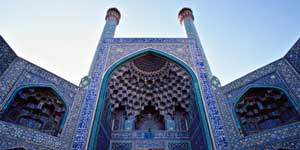This birdwatching tour offers a different route, focusing on a variety of habitats and regions with extended stays to ensure an in-depth and leisurely experience. From lush forests to coastal wetlands and vast deserts, this tour covers Iran's diverse bird habitats, providing ample opportunities to observe both resident and migratory species.
Day 1: Arrival in Tehran
-
Arrival at Tehran International Airport.
-
Transfer to your hotel and relax after your journey.
-
Evening: Optional visit to Lavizan Forest Park in Tehran, where you can spot local urban species like Eurasian magpies, house sparrows, and common blackbirds.
-
Overnight: Stay in Tehran.
Day 2-3: Isfahan & Zayanderud Wetlands
-
Morning (Day 2): Early departure to Isfahan, staying for two nights in this historic city.
-
Visit the Zayanderud River and its surrounding wetlands. Birdwatching here offers excellent opportunities to see species such as white storks, herons, common pochards, and little grebes.
-
Explore the nearby Marbariyeh Wetlands and spot species like flamingos, water rails, and black-winged stilts.
-
-
Day 3: Spend the day exploring Isfahan’s outskirts and its wetlands. The area is home to waders, ducks, and the occasional white-tailed eagle.
-
Overnight: Stay in Isfahan.
Day 4-5: Dasht-e Kavir Desert – Central Iran
-
Morning (Day 4): Head to the Dasht-e Kavir Desert for a two-night stay in one of Iran’s vast and stunning deserts.
-
The Kavir Desert provides sightings of desert-adapted species such as sandgrouse, hoopoe larks, and desert sparrows. Look out for falcons and kestrels in the dry, open landscape.
-
-
Afternoon: Visit some of the desert’s salt flats and seasonal water sources, where migratory species such as common cranes and swallows may stop.
-
Day 5: Continue exploring the desert and its unique ecosystems, searching for larks, buntings, and other hardy desert birds.
-
Overnight: Stay at a desert lodge or guesthouse, enjoying the solitude and vastness of the desert.
Day 6-7: Caspian Sea Wetlands – Northern Iran
-
Morning (Day 6): Travel to the Caspian Sea Coast for a two-night stay. This area is a prime location for birdwatching due to its wetlands and rich biodiversity.
-
Visit Golestan National Park and observe Persian partridges, woodpeckers, and northern goshawks. This UNESCO site offers a mix of wetland and forest species.
-
-
Afternoon: Explore the Caspian coast, looking for Eurasian spoonbills, waders, and red-necked grebes in the wetland areas.
-
Day 7: Continue birdwatching along the Caspian Sea. Focus on spotting grey herons, swans, and cormorants. The lush forests near the sea are perfect for spotting species such as spotted flycatchers and red-breasted flycatchers.
-
Overnight: Stay at a coastal hotel or guesthouse with views of the Caspian Sea.
Day 8-9: Khuzestan Wetlands & Shadegan Marsh – Southwestern Iran
-
Morning (Day 8): Travel south to Khuzestan Wetlands for a two-night stay in this critical wetland region. These marshes are famous for attracting large numbers of migratory birds, especially during the winter months.
-
Visit Hoor al-Azim Wetland and Shadegan Marsh for a chance to see Dalmatian pelicans, flamingos, herons, and ducks. You may also spot eagles and buzzards.
-
-
Day 9: Continue birdwatching in Khuzestan, focusing on waterfowl and migratory species. The area is a key stopover for birds migrating from Europe and Asia, making it a perfect location for spotting rare and transient species.
-
Overnight: Stay in a local guesthouse in Ahvaz or a nearby town.
Day 10: Return to Tehran & Departure
-
Morning: Return to Tehran by flight or road, depending on your preference.
-
Afternoon: Free time for last-minute sightseeing or shopping in Tehran.
-
Evening: Transfer to Tehran International Airport for departure.
Key Species to Expect
-
Raptors: Golden eagle, northern goshawk, white-tailed eagle, and buzzards.
-
Waterfowl: Dalmatian pelican, flamingos, common pochard, swans, common cranes, and swallows.
-
Desert Birds: Sandgrouse, desert sparrows, hoopoe larks, falcons, and kestrels.
-
Wetland Birds: Spoonbills, grey herons, cormorants, swallows, and common teal.
-
Coastal Birds: Waders, red-necked grebes, and little grebes along the Caspian Sea.
Best Time to Visit
-
Spring (April to June) and Autumn (September to November) are the best seasons for birdwatching in Iran, as these are the peak times for migratory birds passing through the country.
This alternative birdwatching itinerary gives you more time in each region, allowing for a deeper connection with the local ecosystems and birdlife. The combination of wetlands, deserts, forests, and coastal habitats ensures a variety of bird species while maintaining a relaxed pace.






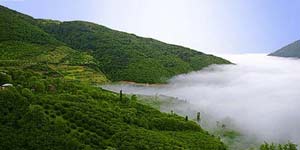

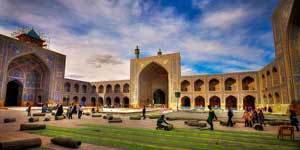
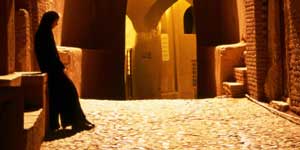
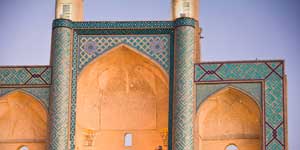
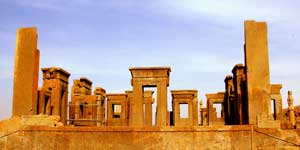
 > Shiraz >
> Shiraz >  > Isfahan
> Isfahan